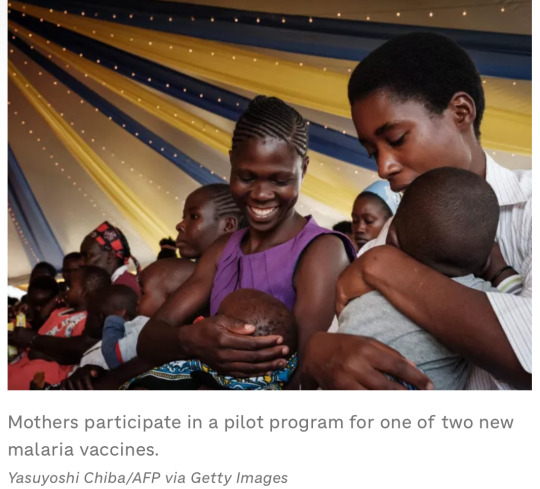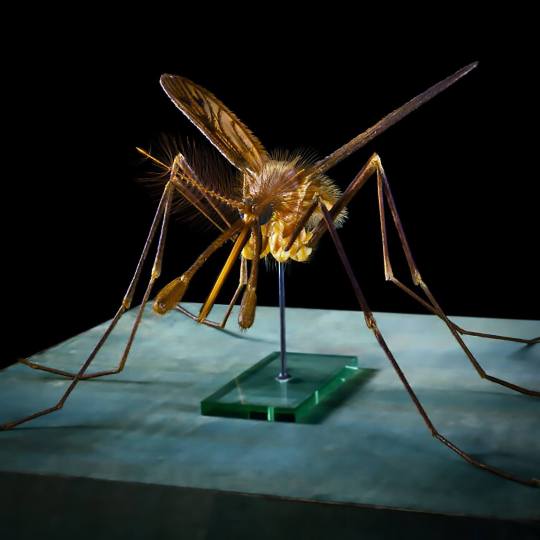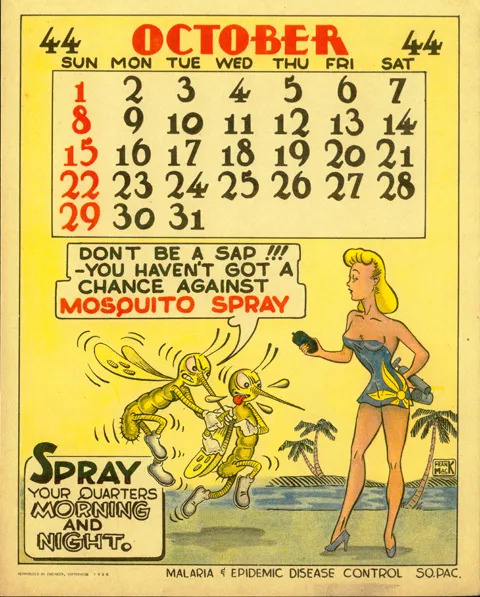#MALARIA
Note
Dear Hellsites Genetics,
I love all the hard work you do and I really appreciate it. I'm currently learning biology and I'm starting to get really into it. I hope that you are well all the time, and that you have all the luck and happiness in your future. You inspired me to study biology, and I'm really grateful for it. Thank you once again!
With love and respect,
An anonymous amino acid creature
String identified:
a t Gtc,
a t a a a acat t. ' ct ag g a ' tatg t gt a t t. tat a a t t, a tat a a t c a a t. t t g, a ' a gat t. Ta c aga!
t a ct,
A a a ac cat
Closest match: Plasmodium sp. DRC-Itaito genome assembly, chromosome: 10
Common name: Unclassified Malaria-Causing Parasite

(image source)
Note: this image is not of the same organism, but of P. falciparum, which is of the same genus.
#tumblr genetics#genetics#asks#requests#sent to me#anon#biology#plasmodium#malaria#Plasmodium sp. DRC-Itaito#parasites#this is the third time we've gotten a malaria-causing parasite on here!#a little unfortunate it happened to be on this otherwise lovely ask lol
6K notes
·
View notes
Link
“A young scientist who worked in the jungles of Thailand has been awarded a national prize for his invention of a $2 paper microscope that can be taken on field expeditions.
If a scientist wants to study something at the microscopic level, they need a microscope, which if they are deep in the Amazon Rainforest presents a serious problem.
Stanford University bioengineer Manu Prakash saw in his team’s $50,000 microscope a serious contradiction. As well as being bulky and ridiculously challenging to transport to remote locations, it needed training from skilled technicians to know how to use it. It also had to stay well out of the weather and other environmental impacts.
So he invented a portable one. Costing $1.75, the Foldscope has a 140x zoom, which is a small enough field to see a malaria parasite inside a cell...
“I want to bring science into everyone’s hands, make it more personal,” Prakash told CNN. “We have decoupled everyday life from the process of science.”
The ultimate in schoolhouse science, Prakash’s invention has sold 1.6 million units, mostly to schools in America, but serious scientists are also using it—like Dr. Kirti Nitnaware in India who works on the isolation and characterization of bioactive metabolites in cyanobacteria.
She used the Foldscope last year to isolate a new species of cyanobacteria. For this and other reasons, Prakash received the 2022 Golden Goose Award from the American Association for the Advancement of Science (AAAS), parent company of the scientific journal, Science.
“The Golden Goose Award reminds us that potential discoveries could be hidden in every corner and illustrates the benefits of investing in basic research to propel innovation,” said Sudip S. Parikh, chief executive officer at AAAS.” -via Good News Network, 9/20/22
#science#citizen science#thailand#stanford#microscope#science and technology#golden goose award#microbiology#malaria#good news#hope
6K notes
·
View notes
Text
Good News - May 22-28
Like these weekly compilations? Support me on Ko-fi or $Kaybarr1735! Also, if you tip me on Ko-fi or CashApp (and give me some way to contact you if it doesn’t automatically), at the end of the month I'll send you a link to all of the articles I found but didn't use each week - almost double the content!
1. Scientists Invent Healthier More Sustainable Chocolate

“The new chocolate recipe from researchers at ETH Zurich uses more materials from the cocoa pod that are usually discarded, including more of the pulp as well as the inner lining of the husk, known as the endocarp. […] The resulting chocolate also [was “deliciously sweet” and] had 20% more fibre and 30 percent less saturated fat than average European dark chocolate[, and] it could enable cocoa farmers [to] earn more from their crops.”
2. Vermont Is Coming for Big Oil, Making It Pay for Decades of Climate Pollution

“Legislators in Montpelier are on the brink of enacting the "Climate Superfund Act," modeled after the federal Superfund law, that seeks to make oil, gas and coal companies pay for damages linked to historical greenhouse gas emissions. […] Companies would be held liable for the costs associated with […] floods and heat waves, along with losses to biodiversity, safety, economic development and anything else the treasurer deems reasonable[, that were caused by their emissions].”
3. Important bird habitat now protected in the Rocky Mountain Trench
“Grassland-reliant species in the Rocky Mountain Trench now have more protected habitat thanks to a new [270-hectare] conservation area near Cranbrook. […] About one-third of the Skookumchuck Prairie Conservation Area is forested[…,] Most of the site is a dry grassland[…, and] Three hectares of wetlands add to the landscape diversity and offer crucial benefits to wildlife and water systems in the area. This conservation gem also provides habitat for endangered American badger and excellent winter range for elk, mule deer and white-tailed deer.”
4. Lemur Week marked by 70th breeding success

“A wildlife park has celebrated its 70th lemur breeding success ahead of a week raising money to help save the endangered primates. […] The park's open-air Madagascar exhibit is home to 31 free-roaming lemurs and was officially opened in 2008. […] Females are only sexually receptive for just one or two days a year, leaving a small window of opportunity for males to father offspring. […] The two playful siblings, one female and one male, were born to father Bernard and mother Hira.”
5. Innovative material for sustainable building
“Researchers introduce a polymer-based material with unique properties. This material allows sunlight to enter, maintains a more comfortable indoor climate without additional energy, and cleans itself like a lotus leaf. The new development could replace glass components in walls and roofs in the future.”
6. Isle of Wight eagles don't pose threat to lambs as feared

“While there had previously been fears that the eagles would feed on livestock, such as lambs, the project has found no evidence of this. [… “W]hite-tailed eagles effectively steal meals from other predatory birds[, which is] a really important ecological role that had been lost within the landscape and is being restored.” [… The birds’] population was boosted by a chick last year – the first time the species has bred in England in 240 years.”
7. Breakthrough discovery uses engineered surfaces to shed heat
“Cheng's team has found a way to lower the starting point of the [Leidenfrost] effect by producing a surface covered with micropillars. […] The discovery has great potential in heat transfer applications such as the cooling of industrial machines and surface fouling cleaning for heat exchangers. It also could help prevent damage and even disaster to nuclear machinery.”
8. New malaria vaccine delivered for the first time

“A total of 43,000 doses arrived by air today from UNICEF, and another 120,000 are scheduled to show up in the coming days. […] They're the first vaccines designed to work against a human parasite. […] Across four African countries, these trials showed a 75% reduction in malaria cases in the year following vaccination of young children. […] The Serum Institute of India, who will be manufacturing the new vaccine, says a hundred million doses will likely be available to countries by the middle of next year.”
9. Urban gardening may improve human health: Microbial exposure boosts immune system
“"One month of urban indoor gardening boosted the diversity of bacteria on the skin of the subjects and was associated with higher levels of anti-inflammatory cytokines in the blood. The group studied used a growing medium with high microbial diversity emulating the forest soil," [… whereas] the control group used a microbially poor peat-based medium. [… N]o changes in the blood or the skin microbiota were seen. […] “This is the first time we can demonstrate that meaningful and natural human activity can increase the diversity of the microbiota of healthy adults and, at the same time, contribute to the regulation of the immune system."”
10. Cities Are Switching to Electric Vehicles Faster Than Individuals

“[M]ost large cities have adopted some kind of climate goal, and some of them are buying EVs for their municipal fleets at a faster rate than the general public. And that progress could speed up as more EVs enter the market and as cities get educated about grant funding and tax incentives that were passed over the last four years.”
May 15-21 news here | (all credit for images and written material can be found at the source linked; I don’t claim credit for anything but curating.)
#hopepunk#good news#chocolate#sustainability#farming#health#vermont#big oil#oil companies#climate change#cooling#technology#nuclear#malaria#vaccine#africa#unicef#eagles#livestock#england#birds#electric vehicles#glass#energy efficiency#habitat#conservation#lemur#zoo#gardening#urban gardening
331 notes
·
View notes
Text

Have you ever noticed this gigantic mosquito at the Museum?
This isn’t a specimen of some monstrously-sized insect, but instead a scaled-up model of the tiny Anopheles maculipennis. This mosquito model is enlarged 47 times and debuted at the Museum in 1917 as part of an effort to educate the public about mosquito-borne illnesses like malaria and yellow fever.
Of the more than 3,500 species of mosquito known to science, the Anopheles mosquito is among a small handful responsible for malaria transmission in humans. While only females bite and transmit disease to humans, this model is a male.
At the time, it was a somewhat controversial idea that the mosquito, not poor sanitation, spread malaria. Since the model’s unveiling at the Museum, huge advances have been made in the global effort to combat and treat malaria as well as to educate the public about the disease.
Photo: © AMNH
347 notes
·
View notes
Photo

World distribution of Dengue (blue) and Malaria (red)
153 notes
·
View notes
Text

Sketch of Malaria from Grim Adventures of Billy and Mandy.
#malaria#the grim adventures of billy and mandy#cartoon network#fanart#cartoony#pin up#sketch#traditional art#grim adventures of billy and mandy#billy and mandy#art#pencils
331 notes
·
View notes
Text

It's malaria season.
451 notes
·
View notes
Text
For a condition that affects at least one in ten women of reproductive age and is a leading cause of female infertility worldwide, we understand surprisingly little about polycystic ovary syndrome (PCOS).
At present, treatment for the condition focuses largely on managing specific symptoms.
Now a pilot clinical study led by Fudan University in China has found a pharmaceutical used to treat malaria shows promise as a PCOS treatment, shrinking oversized follicles and returning regularity to some participants' periods.
Continue Reading.
143 notes
·
View notes
Text

It had to be done!
#this might be my first actual undertale fanart#Papyton#Mettaton#Papyrus#Undertale#spooky month#parody#memes#grim adventures of billy and mandy#gaobam#billy and mandy#grim reaper#malaria#grimxmalaria#grim#fanart#villains#cartoon network#cartoons#halloween#my art
35 notes
·
View notes
Text
Malaria, Sickle-Cell, and Dragons in the Temeraire Universe
so I've been thinking about sickle cell all day because of the very cool real-life FDA crispr treatment approval news, and also I'm just about done rereading empire of ivory so thusly it is time to write the sickle cell/malaria/dragons/benefits of human-dragon mutualism breakdown I mentioned ages ago.
Standard disclaimer that I am not in fact anywhere near an expert on this, this is mostly recall from ANTH 102/215 classes I took five years ago, the info is very simplified and possibly somewhat out of date. I'm doing some quick checks and I write this but only enough to make this an appropriate fantasy novel fandom post, not enough to make it actually reliably informative. I do have a couple citations, but mostly for the parts I'm lifting straight out of a class assignment I wrote, and they're a short documentary hosted on YouTube and the textbook for the class. also none of my links are live because I want this fandom post to actually show up in the fandom tag lol.
second disclaimer is I'm starting at the basic obvious stuff because I genuinely have no idea how much most people know about this and better safe than confusing.
Intro and Background
So the first thing to know about any of this is that human genetics for the most part to not operate on mendelian inheritance. So the punnet squares in high school biology that did human hair or eye color as basic dominant/recessive one-gene traits were totally lying to you. Like they're a teaching tool for a very simple model that works well enough but they're not accurate. Most human phenotypes are way way more complicated genetically than that.
That said, there are exceptions. Mendelian traits (Characteristics that are influenced by alles at only one genetic locus) do exist in humans, a number of them being related to genetic diseases. The list in the ANTH 102 notes I just dug up was: Wet (dominant) or dry Earwax; Albinism; Brachydactyly (dominant); Blood type (ABO, not the positive/negative part); Hereditary breast-ovarian cancer syndrome (BRCA-1, BRCA-2, unknown genes); Huntington’s disease; Lactase persistence (dominant); and Sickle-cell disease (recessive).
So the sickle cell punnet square looks like this for two parents who both have one copy of the sickle cell gene:

Sickle cell is a very painful and life threatening disease, (That's why the FDA approving a crispr treatment for it allowing patients to be their own bone marrow donors is very exciting.) and from an evolutionary perspective, one that very often prevents people from reproducing. It's also not strictly dominant/recessive, in that people heterozygous for sickle cell can have some symptoms like the possibility a sickle-cell crisis triggered in low-oxygen situations (high altitudes, intense exercise, etc).
So one might think that Sickle cell would be a vanishingly rare disease, since having it can be deadly and even having the trait can in some cases cause problems. Only it's not rare by genetically inherited disease standards, not at all.
And to make a long story very short, the reason is malaria.
Malaria
People who are heterozygous (possessing one sickle cell gene and one normal gene) for sickle cell anemia are resistant to malaria. In areas of the world without a high incidence of malaria historically, there is a strong selection against the sickle cell gene, (Biointeractive Malaria and Sickle Cell Anemia, 9:33) but in areas with malaria, both having sickle cell disease (homozygous HbSS) and not having the trait at all (homozygous HbAA) are selected against. People with sickle cell were historically less likely to reproduce, and people who were not resistant to malaria were more likely to die of malaria and also not reproduce. Because being heterozygous with sickle cell is selected for, the gene persists in the population.
The implications of that are best summed up from this map that I just stole from Britannica.com:

I dunno if the percentages on that second one are accurate tbh, other infographic maps I'm looking at give different ranges. but sill, you get the gist about how common it is in equatorial Africa. In the modern United States Black children are much much more likely to be born with sickle cell than white children—the genes don't just go away when the threat of malaria is removed. (And yeah, that's a historical consequence of the slave trade.)
There's some other stuff wrapped up in here too about bio-cultural evolution: There's indications that malaria was not a “significant problem until humans abandoned food foraging for farming” (Haviland, W. A., Prins, H. E., Walrath, D., & McBride, B.). Humans cleared away the forest, which had kept the soil absorbent. Without the vegetation, more water built up on the surface, forming stagnant puddles which were a perfect environment for malaria-causing mosquitoes to thrive, thus creating the conditions for sickle cell anemia to be advantageous. Farming creates caloric surplus which is great for humans, but it also changes the environment in ways that can be detrimental. Malaria is one way, creating the conditions for other epidemic diseases to thrive is another, etc. etc.
But if you've read this far you're probably going "Chi, you promised this would be a fandom post but so far this has been a serious and kind of sad post about disease. when are you going to get to the dragons?"
The Dragons
So the first time malaria comes up in the Temeraire books is in Throne of Jade, when a bunch of the sailors on the Allegiance come down with "malarial Fevers."
Jane, I must ask you to forgive the long gap in this Letter, and the few hasty Words that are all by which I can amend the same now. I have not had Leisure to take up my pen these three weeks—since we passed out of Banka Strait we have been much afflicted by malarial Fevers. I have escaped sickness myself, and most of my men, for which Keynes opines we must be grateful to Temeraire, believing that the heat of his body in some wise dispels the Miasmas which cause the ague, and our close association thus affords some protection.
But we have been spared only to increase of Labor: Captain Riley has been confined to his bed since almost the very first, and Lord Purbeck falling ill, I have stood watch in turn with the ship’s third and fourth lieutenants, Franks and Beckett. Both are willing young men, and Franks does his best, but is by no means yet prepared for the Duty of overseeing so vast a Ship as the Allegiance, nor to maintain discipline among her Crew—stammers, I am sorry to say, which explains his seeming Rudeness at table, which I had earlier remarked upon.
I do not know enough about what people thought about malaria in the 19th century to be 100% sure that this is actually malaria, but I think Novik wouldn't want to confuse her readers by calling something malarial that isn't you know..malaria. So I'm going to assume thats what it is. Google is not giving me figures on malaria survival rates before modern medicines for it which is driving me kind of nuts and means I can't say how lucky Riley and Purbeck were to survive with apparently no complications, but that's not the point here anyway. The point is the comment about the aviators not getting sick.
And not only (mostly) not getting sick, but not getting sick even though they aren't actually always near Temeraire. Laurence for example has been working watch shifts near constantly because he's the only one left on the ship who knows what he's doing. That means probably less read & cuddle time than is normal for him and Temeraire, and yet—no malaria.
We modern readers (and Novik) know that malaria is not caused by "miasmas" but by parasites carried by mosquitos. And lo and behold when we get to Empire of Ivory we get:
Mosquitoes sang happily as dusk drew on, though they did not come very close to Temeraire; the flies were less judicious. The shapes of the trees were growing vague when Temeraire woke with a start and said, “Laurence, there is someone coming, there,” and the grass rustled on the opposite bank.
So yeah, the dragons are keeping the mosquitos away. I know fuck all about why—it's probably not heat since you know, mosquitos like warm blooded organisms, but maybe it's an oil or a chemical or some artifact of the way some of them can breathe fire that's present in all dragons or something, they're described as smelling weird a few times, so who knows. If it's a substance like an oil in their skin that could explain why the aviators don't get sick even when they're not nearby, since they could have some on them from contact, but that's just speculation. The point is not the mechanism, just that it's happening.
The Point
This whole post grew out of a throwaway comment I made about the benefits of mutualistic symbiosis with dragons from the human perspective in that one post about how the series has some interesting stuff obviously going on psychologically/biologically. The point of going in-depth on malaria and sickle cell is to show how this is really impressively solid worldbuilding in relation to the Tswana.
See, Empire of Ivory describes locations that seem like they're in modern day Botswana, Zimbabwe, and Zambia, regions which will have had long-term problems with malaria-causing mosquitos. That's not the densest area for sickle cell, but still definitely in the region where malaria would have exerted selective pressure.
Selective pressure which, in a universe where just being around a dragon is going to drastically reduce malaria rates, is going to leave dragon-friendly populations a lot healthier than dragon-unfriendly ones. A community that has a dragon stay every night and work alongside humans during the day is going to have a lot less malaria even without the sickle cell resistance than a community which has no dragon. And considering that malaria is bad enough that sickle cell genes persist despite it also having a high chance to cause a deadly disease, whereas a dragon that's a fully prosocial member of the community is not going to cause more death and instead will probably help with defense and create more caloric surplus (at the cost of consuming most of that surplus) a dragon is just obviously the better option. From there, it's extremely easy to see how the Tswana in the series could develop such a dragon-centric culture and have it be so wildly successful. The dragons provide fertilizer, the dragons allow for fully domesticated elephants, and the dragons render malaria—one of the deadliest diseases in history—nearly a nonissue. Of course they're family.
Citations:
Biointeractive. (2014, August 26). Malaria and Sickle Cell Anemia - HHMI BioInteractive Video. Retrieved October 3, 2018, from https://www.youtube.com/watch?v=Zsbhvl2nVNE
Haviland, W. A., Prins, H. E., Walrath, D., & McBride, B. (2017). Anthropology: The Human Challenge (15th ed.). Boston: Cengage Learning.
#Temeraire#it’s more bio-cultural evolution#wikipedia claims that malaria may have killed 50-60 billion people through history but I do not trust that citation AT ALL#regardless its still one of the deadliest killers ever#the kitten rambles#malaria#sickle cell anemia#Artemis if you read this I am sorry for the butchering I made of some anthropology concepts
104 notes
·
View notes
Note
Die monster. You don't belong in this world!
It was not by my hand that I am once again given flesh. I was called here by humans who wish to pay me tribute.
Tribute!?! You steal men's souls and make them your slaves!
Perhaps the same could be said of all religions…
Your words are as empty as your soul! Mankind ill needs a savior such as you!
What is a man? A miserable little pile of secrets.
But enough talk… Have at you!
String identified:
t. 't g t !
t a t a tat a c aga g . a ca a t a tt.
Tt!?! ta ' a a t a!
a t a c a a g…
a a t a ! a a a c a !
at a a? A a tt ct.
t g ta… a at !
Closest match: Plasmodium sp. gorilla clade G2 genome assembly, chromosome: 5
Common name: Parasite that causes Malaria

(image source)
Note: this image is of P. falciparum, a member of the genus Plasmodium.
#tumblr genetics#genetics#asks#requests#guygirlwhatever#sent to me#castlevania#dracula#parasites#plasmodium#malaria#What is a mosquito? A miserable little pile of plasmodiums
569 notes
·
View notes
Text

"Malaria once cast a long shadow over Lao PDR [Laos]. In 1997, an estimated 462,000 people were infected with significant economic and social impacts.
Education and employment were disrupted, and countless lives were lost. The disease's grip extended far beyond the initial illness, with long-term health consequences a heavy burden on communities.
However, a dramatic shift has occurred. Thanks to accelerated strategies implemented by the National Malaria Control and Elimination Program, Ministry of Health and its partners, including the World Health Organization and United States Agency for International Development (USAID), malaria cases have dropped by over 90 percent over the past decade, with just 809 cases in 2023. The nation is now on the brink of eliminating Plasmodium falciparum, the deadliest malaria parasite, by the end of 2025.
While many unsung heroes play crucial roles behind the scenes, including at the community level, a key group is laboratory technicians (microscopists). These dedicated individuals are the eyes on the ground, detecting, tracking, and monitoring malaria cases in high-risk areas...
While rapid tests are valuable tools, Somphan emphasizes the importance of microscopic examination – considered by WHO to be the “gold standard” for malaria diagnosis, and an important skill for every country’s health workforce to maintain for malaria elimination, and broader health security efforts.
Positively - her efforts, and the efforts of healthcare workers and health educators, are paying off.
"People are now more aware of malaria and its dangers," Somphan says. "They have come to understand the seriousness of malaria and the importance of early diagnosis and proper treatment. They now recognize that avoiding hospitalization could lead to prolonged illness and greater disruption to their lives…they are more likely to seek medical attention, even for mild symptoms."
The increasing number of patients coming for testing – sometimes up to 40 per day – is a testament to increased capacity and awareness in the community. But, she notes – they more increasingly have quiet days – a reflection of progress towards eliminating the disease."
-via USAID, August 20, 2024
221 notes
·
View notes
Text
I really enjoy these pages from an anti-malaria calendar issued to soldiers in World War II. It's a reminder that the soldiers were mostly just kids, and that the way to get them to pay attention was to make silly cartoons with pretty ladies in them.


{Buy me a coffee} {WHF} {Medium} {Looking Through the Past}
More propaganda at the link below:
99 notes
·
View notes
Text
If you're despairing about the state of the world right now (aren't we all?), maybe go check out this article about malaria vaccines. 'Cause that's kind of a big fucking deal.
Malaria is like, stupidly nasty and deadly. Humanity's been trying to make a vaccine against it for decades and now we have two! And already, vaccination campaigns in Ghana, Malawi, and Kenya have caused child mortality from all causes to drop by 13%. That's huge. That's fucking insane. That's not a drop in childhood malaria deaths, that a drop in deaths from fucking anything, because malaria was such a huge portion of child fatalities. Which are now being prevented! The entire world should be celebrating this! Maybe go read about it in between doomscrolling about the elections.
26 notes
·
View notes
Text

Love is love is love!
I can't thank the loveliest coffeesforchloe on Instagram for this stunning art of my ot3! Daenarya is one happy and lucky lady to be caught between two people she loves most!
For @choicespride and @choicesficwriterscreations Bisexual Awareness Week 💖💜💙
[Mal Volari x Daenarya Blades 1 + Beyond] [Mal’s Orphanage]
[Mal Volari x Daenarya Blades 2 AU]

Look at how cute they even look in the sketch version!!!
#mal volari#mal volari x mc#mal volari x oc#malarya#daenarya#mal x daenarya#nia ellarious#blades of light and shadow#bolas#choices#playchoices#choices game#choices book club#lovealexhunt#blades 2#bolas 2#blades of light and shadow 2#dani plays blades2#september2023#nia ellarious x mc#mal x daenarya x nia#malaria#my commission
103 notes
·
View notes